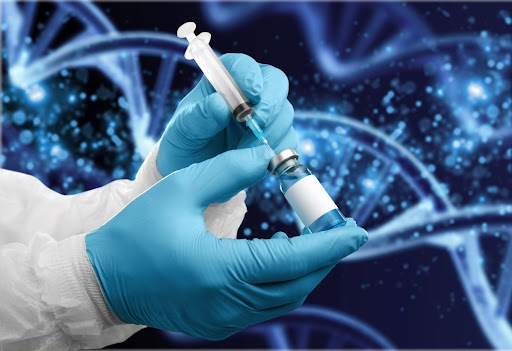Monoclonal antibodies (mAbs) have become one of the most powerful tools in modern therapeutics, offering targeted and effective treatments for a variety of diseases, including cancer, autoimmune disorders, and infectious diseases. At the core of every monoclonal antibody’s specificity and function lies a critical region known as the Complementarity-Determining Regions (CDRs). These small segments are responsible for recognizing and binding to specific antigens, dictating the antibody’s efficacy, selectivity, and overall therapeutic value.
What Are CDRs?
CDRs are short, hypervariable loops located within the variable domains of antibody heavy (VH) and light (VL) chains. There are three CDRs in each chain, designated as CDR1, CDR2, and CDR3, making a total of six per antibody:
- Three in the heavy chain (H-CDR1, H-CDR2, H-CDR3)
- Three in the light chain (L-CDR1, L-CDR2, L-CDR3)
These regions are embedded within a more stable framework of amino acids known as framework regions (FRs), which provide structural support. Together, the CDRs form the antigen-binding site, also called the paratope, that interacts directly with the epitope on the target antigen.
Why CDRs Matter in Drug Development
The therapeutic potential of monoclonal antibodies is determined largely by their ability to bind specifically and tightly to their intended targets. This binding capability hinges on the structure and sequence of the CDRs.
1. Antigen Specificity and Affinity
CDRs define the shape and chemical properties of the antibody’s binding site. Through diverse amino acid sequences and structural conformations, they enable antibodies to recognize a wide array of targets with remarkable precision. Engineering or selecting optimal CDR sequences is therefore essential for:
- High binding affinity
- Minimized off-target effects
- Enhanced therapeutic efficacy
2. Humanization and Immunogenicity
Many therapeutic antibodies originate from non-human sources (e.g., mouse). To reduce immunogenic responses in humans, these antibodies undergo humanization, a process that involves grafting the CDRs of a non-human antibody onto a human antibody framework. Preserving the functional CDRs while minimizing immune rejection is a key balance in antibody engineering
3. Optimizing Therapeutic Performance
In addition to antigen recognition, CDRs can impact downstream biological responses such as:
- Receptor activation or blockade
- Cell signalling modulation
- Effector functions like ADCC (Antibody-Dependent Cellular Cytotoxicity) and CDC (Complement-Dependent Cytotoxicity)
Through CDR mutagenesis and affinity maturation, researchers can fine-tune these functional properties to meet therapeutic goals.
Applications in Monoclonal Antibody Development
A. Cancer Immunotherapy
CDRs are engineered to specifically bind tumor-associated antigens (e.g., HER2, CD20, PD-1), allowing selective targeting of cancer cells while sparing healthy tissue. This selective action is crucial for minimizing side effects and improving treatment outcomes.
B. Autoimmune and Inflammatory Disorders
In diseases such as rheumatoid arthritis or psoriasis, antibodies with CDRs targeting cytokines like TNF-alpha or IL-6 are designed to neutralize excessive immune activity.
C. Infectious Diseases
Antibodies with CDRs that recognize viral or bacterial proteins (e.g., spike proteins of SARS-CoV-2) offer a powerful line of defence by blocking pathogen entry or marking them for destruction.
Emerging Technologies and CDR Design
Recent advancements have improved how CDRs are discovered and optimized:
- Phage Display Libraries: Allows rapid screening of millions of CDR variants to discover antibodies with strong target affinity.
- Next-Gen Sequencing and AI: Assist in analyzing large antibody repertoires and predicting optimal CDR structures.
- Structure-Based Modelling: Tools like AlphaFold are being used to predict how CDR sequences fold and interact with antigens.
Challenges and Considerations
Despite their promise, CDRs present certain challenges:
- Structural Flexibility: Especially CDR-H3, which can adopt diverse conformations, making prediction and design difficult.
- Aggregation Risks: Certain CDR sequences may promote aggregation or reduce stability.
- Immunogenicity: Improperly humanized CDRs may trigger immune responses.
Hence, rigorous screening, validation, and biophysical characterization of CDRs are essential steps in the antibody development pipeline.
Conclusion
CDRs are the molecular foundation of monoclonal antibody specificity, affinity, and therapeutic potential. Through precise engineering and optimization of these regions, researchers can develop safer, more effective, and highly targeted antibody drugs. As technologies advance, the strategic manipulation of CDRs will continue to drive innovation in monoclonal antibody drug development, expanding treatment options for patients worldwide.
Genext Genomics specializes in high-quality antibody development, including CDR engineering, humanization, and affinity maturation. Whether you’re developing a new therapeutic or optimizing an existing candidate, partner with us to accelerate your monoclonal antibody programs with precision and reliability.



